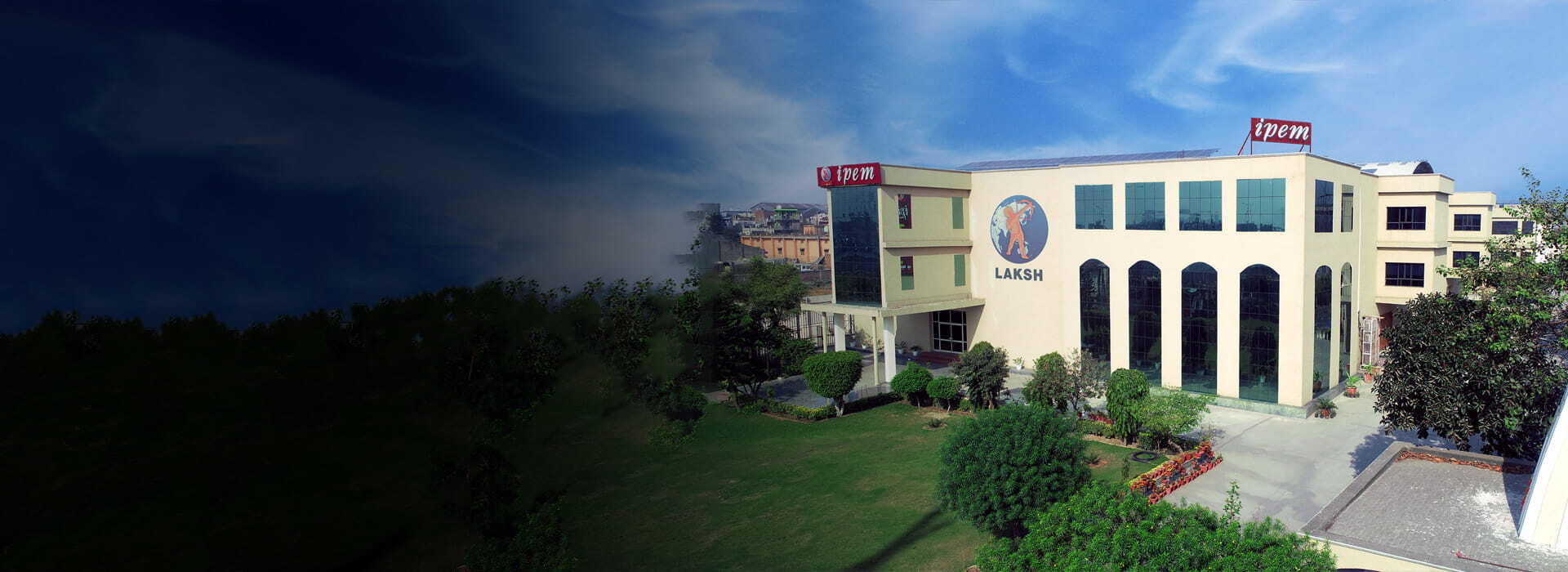GUIDELINES FOR AUTHORS
Manuscript and all Editorial correspondence should be addressed to The Editor, Institute of Professional Excellence and Management, A-13/1, South Side G.T. Road Industrial Area, NH-24, By Pass, Ghaziabad, Uttar Pradesh-201010, India. Email:journalipem@ipemgzb.ac.in
Format
- Cover Page: The cover page of the article should contain: (i) title of the article (ii) name(s) of authors (iii) professional affiliation (iv) complete postal address of correspondence (v) Email Id, (vi) Phone No. (vii) Acknowledgements, if any. The author name should not appear anywhere else in the manuscript.
- Second Page: The next page should begin with the title of the article in Times New Roman, 16-point type, (bold face) followed by the abstract (Times New Roman 10-point type) of the paper in maximum 200 words. Along with 4-6 keywords in Times New Roman 10-point type. There should not be any identification mark anywhere in the text.
- Body of Article: The recommended length of the paper is between 5000-7000 words inclusive of table and figures. Use Times New Roman 12-point type and leave top and side margins of one inch for the entire article. All tables and figures are to be presented at the appropriate place in the text. All tables and figures must be serially numbered mentioning suitable table title/ figure title on top and should indicate the source, as necessary. Tables and figures to be indicated by numbers (e.g see Table 1), not by placement (e.g see table below). All abbreviations should be expanded. Use Times New Roman 10- point type for text in the tables and figures followed by source and notes.
- Headings and Sections: The journal uses two levels of headings. Main headings (Title Case Bold and flush left. Second-level headings (Italics and flush left).
- References: It should be formatted as per APA style, arranged alphabetically with the following details in same order.
- Book with Single Author: Gore, A. (2006). An inconvenient truth: The planetary emergency of global warming and what we can do about it. Emmaus, PA: Rodale.
In-text reference: (Gore, 2006) - Book with Two Authors: Michaels, P. J., & Balling, R. C., Jr. (2000). The satanic gases: Clearing the air about global warming. Washington, DC: Cato Institute.
In-text reference: (Michaels & Balling, 2000) - Book with Editor as Author: Galley. K. E. (Ed.). (2004). Global climate change and wildlife in North America. Bethesda, MD: Wildlife Society.
In-text reference: (Galley, 2004) - Articles in Reference Books (unsigned and signed):
Greenhouse effect. (2005). American heritage science dictionary. Boston, MA: Houghton Mifflin. Schneider, S. H. (2000). Greenhouse effect. World book encyclopedia (Millennium ed. Vol. 8, pp. 382-383). Chicago, IL: World Book.
In-text references: (Greenhouse effect, 2005) (Schneider, 2000) - Magazine Articles: Allen, L. (2004, August). Will Tuvalu disappear beneath the sea? Global warming threatens to swamp a small island nation. Smithsonian, 35(5), 44-52.
Begley, S., &Murr, A. (2007, July 2). Which of these is not causing global warming? A. Sport utility vehicles; B. Rice fields; C. Increased solar output. Newsweek, 150(2), 48-50.
In-text references: (Allen, 2004) (Begley, 2007) - Newspaper Articles (unsigned and signed): College officials agree to cut greenhouse gases. (2007, June 13). Albany Times Union, p. A4.
Landler, M. (2007, June 2). Bush’s Greenhouse Gas Plan Throws Europe Off Guard. New York Times, p. A7.
In-text references: (“College Officials”, 2007) (Landler, 2007) - Journal Article with Continuous Paging: Miller-Rushing, A. J., Primack, R. B., Primack, D., &Mukunda, S. (2006). Photographs and herbarium specimens as tools to document phonological changes in response to global warming. American Journal of Botany,93,1667-1674.
In-text reference: (Miller-Rushing, Primack, Primack, &Mukunda, 2006) - Journal Article when each issue begins with p.1: Bogdonoff, S., & Rubin, J. (2007). The regional greenhouse gas initiative: Taking action in Maine. Environment, 49(2), 9-16.
In-text reference: (Bogdonoff& Rubin, 2007) - Journal Article from a Library Subscription Service Database with a DOI (digital object identifier): Mora, C., & Maya, M. F. (2006). Effect of the rate of temperature increase of the dynamic method on the heat tolerance of fishes. Journal of Thermal Biology, 31, 337-341. doi: 10.101b/jtherbio.2006.01.055
In-text reference: (Mora & Maya, 2006) - Website: United States Environmental Protection Agency. (2007, May 4). Climate Change. Retrieved from the Environmental Protection Agency website: http://www.epa.gov/climatechange
In-text reference: (United States Environmental, 2007)
Gelspan, R. (2007). The Heat Is Online. Lake Oswego, OR: Green House Network. Retrieved from The Heat Is Online website: http://www.heatisonline.org
In-text reference: (Gelspan, 2007)
New Manuscripts for publication should be sent to journalipem@ipemgzb.ac.in
JOURNAL REVIEW PROCESS
Journal of IPEM follows a ‘double blind’ review process. All papers submitted to the Journal initially go through a preliminary review at the editorial desk. Later, on the recommendation of the editors; the article may be rejected or assigned to reviewers in the relevant field. Based on the evaluation of the Reviewers, the manuscript may be accepted as such or rejected or accepted, subject to certain revisions. This review process may take 2-3 months for completion.
Copyright Form as attachment Download copyright form

